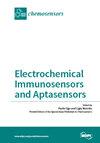基于 SVM 回归的高精度监测方法,用于 PID 对挥发性有机化合物信号响应的多元定量分析
IF 3.7
3区 工程技术
Q2 CHEMISTRY, ANALYTICAL
引用次数: 0
摘要
在土壤-水-空气的潮湿环境中,使用光离子化检测器(PID)监测挥发性有机化合物(VOCs)存在精度不高的问题。本研究基于本课题组研制的 PID 水-土-气挥发性有机物在线监测仪,对山东省石油和化工行业不同生产企业不同成分的挥发性有机物浓度进行在线监测,结合实验室检测浓度,建立相关模型。通过收集大量数据训练,得到了 PID 测试浓度与实际浓度相关系数。基于 PID 在 VOC 监测中的应用,建立 PID 高精度校准模型对 VOC 的精确监测具有重要意义。本文基于 PID 对 VOC 信号响应的 SVM 回归,进行了多重定量分析,研究了高精度 VOC 监测方法。为了选择研究小组测量的不同浓度环境挥发性有机化合物下的 PID 响应信号,首先利用支持向量机原理对 PID 对挥发性有机化合物信号的响应进行建模,以验证传统 SVM 回归的效果。针对原始数据冗余的问题,计算 PID 信号的时域和频域特征,并对 PID 信号的时域进行主成分分析。为了使 SVM 回归更具普适性和鲁棒性,利用遗传算法优化了 SVM 的核函数参数和惩罚因子的选择。通过比较 PID 信号特征提取、SVM 回归和主成分分析 SVM 回归等 PID 定标模型的准确性,验证了采用信号特征提取 PCA-GA-SVM 方法的光离子化检测器监测 VOCs 的优越性。本文章由计算机程序翻译,如有差异,请以英文原文为准。
A High-Precision Monitoring Method Based on SVM Regression for Multivariate Quantitative Analysis of PID Response to VOC Signals
In the moist environment of soil-water-air, there is a problem of low accuracy in monitoring volatile organic compounds (VOCs) using a photoionization detector (PID). This study is based on the PID water-soil-gas VOC online monitor developed by this group, online monitoring of the concentration of different constituents of VOCs in different production enterprises of the petroleum and chemical industries in Shandong Province, with the concentration of the laboratory test, to build a relevant model. The correlation coefficient about the PID test concentration and the actual concentration correlation coefficient was obtained through the collection of a large number of data trainings. Based on the application of PID in VOC monitoring, the establishment of a PID high-precision calibration model is important for the precise monitoring of VOCs. In this paper, multiple quantitative analyses were conducted, based on SVM regression of PID response to VOC signals, to study the high-precision VOC monitoring method. To select the response signals of PID under different concentrations of environmental VOCs measured by the research group, first, the PID response to VOC signals was modeled using the support vector machine principle to verify the effect of traditional SVM regression. For the problem of raw data redundancy, calculate the time-domain and frequency-domain characteristics of the PID signal, and conduct the principal component analysis of the time-domain of the PID signal. In order to make the SVM regression more generalized and robust, the selection of kernel function parameters and penalty factor of SVM is optimized by genetic algorithm. By comparing the accuracy of PID calibration models such as PID signal feature extraction, SVM regression, and principal component analysis SVM regression, the superiority of photoionization detector using the signal feature extraction PCA-GA-SVM method to monitor VOCs is verified.
求助全文
通过发布文献求助,成功后即可免费获取论文全文。
去求助
来源期刊

Chemosensors
Chemistry-Analytical Chemistry
CiteScore
5.00
自引率
9.50%
发文量
450
审稿时长
11 weeks
期刊介绍:
Chemosensors (ISSN 2227-9040; CODEN: CHEMO9) is an international, scientific, open access journal on the science and technology of chemical sensors published quarterly online by MDPI.
 求助内容:
求助内容: 应助结果提醒方式:
应助结果提醒方式:


